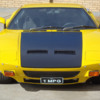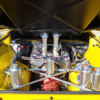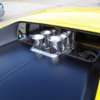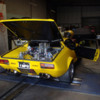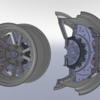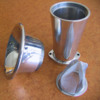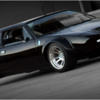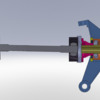New colours for Pantera 4384.
Bonnet & boot lid painted satin Black.
Ran the Pantera on the Dyno today at West Racing here in Perth.
Tuned real nice up to 4500 rpm.
Then the computer comes up with a "Sync Error" & the car starts to backfire.
It's looking for the Sync sensor which goes where the Distributor used to be.
It's there, just not wired in as we were running the tune the same way the injection was designed, (Older 80's setup & was without the sync).
But the Motec seems to want it there so will have to wire it into the computer & get it back on the Dyno.
So far its producing 320hp @ 4500 RPM at the wheels.
Still has 2000 RPM to go so it may do somewhere in the region of 375 HP at the wheels, which would equate to around 500hp at the crank.
We chewed around 35 litres, (8.5 gallons) of 98 octane today on the Dyno so the car is living up to its "1 MPG" plate!
Here are a couple of Youtube videos of it on the dyno.
Oh & CRANK THE VOLUME !!!!
http://www.youtube.com/watch?v=1h3_I9bm_wg
http://www.youtube.com/watch?v=BovQc9vBdjo
regards,
Tony
Attachments
Original Post


